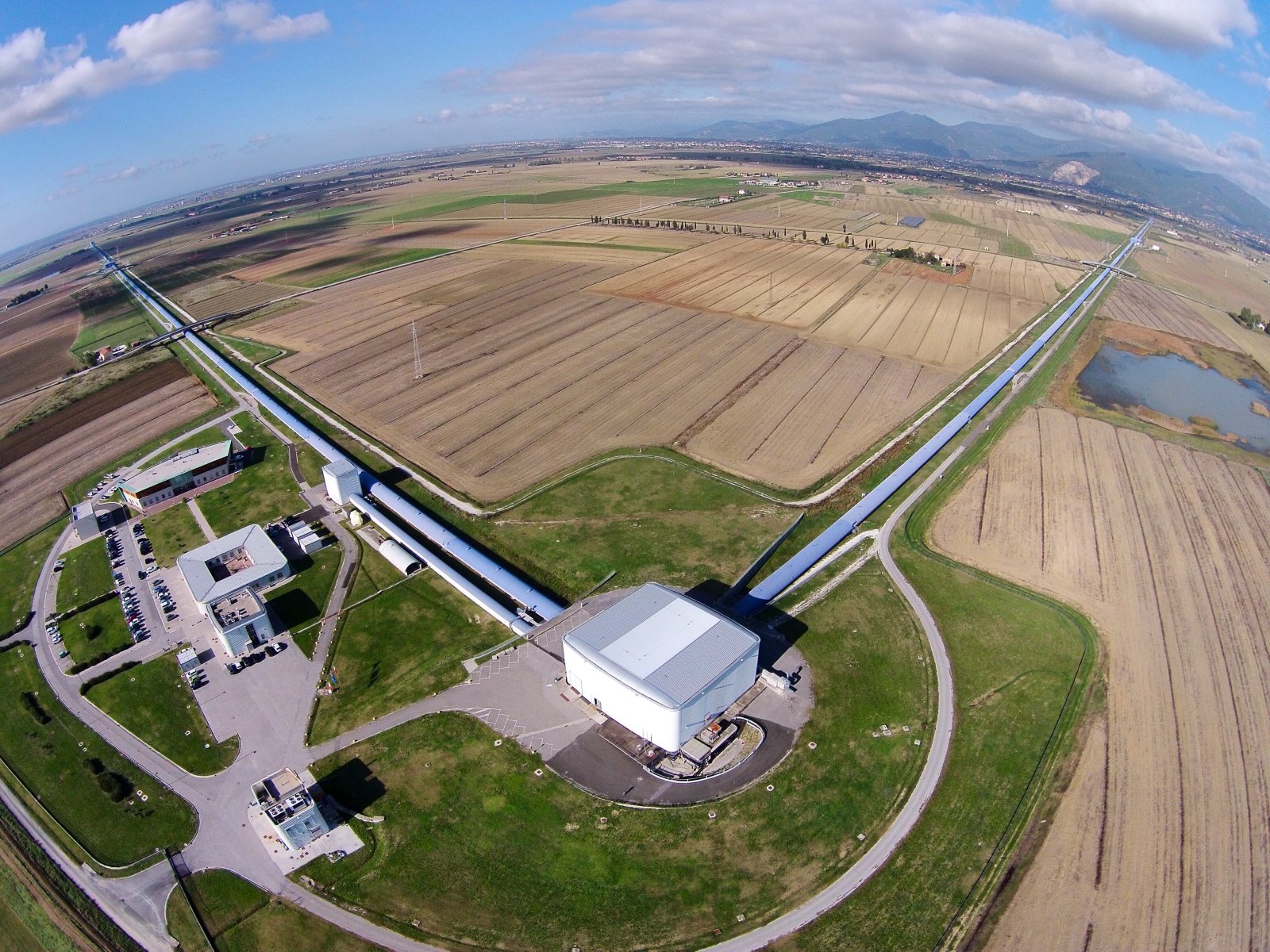This post is part of a series about quick questions and answers about the Virgo experiment and the science of gravitational waves. Do you have a quick question? Tell us and we will reply!
Is Virgo a telescope observing the Universe?
Virgo can be seen as a special kind of telescope, since it looks for phenomena happening far in the cosmos. But its appearance and working principle are completely different from that of a traditional telescope. In fact, it is not using mirrors or lenses in the same way as an optical telescope does. It is made of two, 3-km long, perpendicular arms to measure the tiny deformations in the spacetime induced by the passage of a gravitational wave. Furthermore, Virgo and the other laser interferometers (such as LIGO in the US) cannot be pointed at a region of the sky, but continuously observe most of the sky at any moment in time.
For this reason, it is crucial to have more than one interferometer observing simultaneously in order to localize the sources of gravitational waves by measuring the arrival time and amplitude difference of the gravitational waves in the different instruments. The network composed of the Virgo and LIGO instruments is the real telescope observing the Universe. This is why LIGO and Virgo scientists agree to join their efforts, by sharing their knowledge and utilizing their instruments and data together since the first Virgo data taking period in 2007.

The two 3-km arms of the interferometer meet the central building where the laser is generated, and five mirrors, including the beam-splitter mirror, are hosted. Optical benches used to acquire the interference pattern are also hosted in this building. On the left part, the other buildings host EGO offices.
Credits: the Virgo Collaboration/N. Baldocchi

